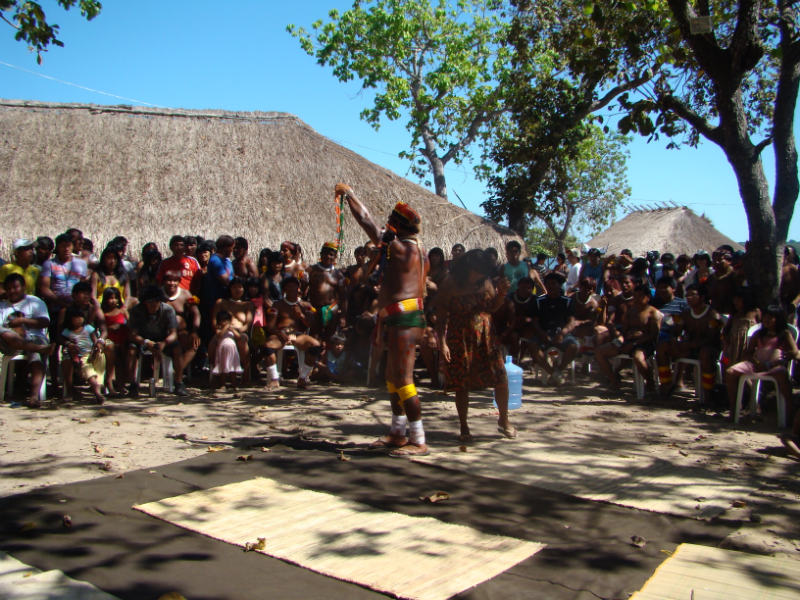The Kamayurá are an indigenous tribe in the Amazonian Basin of Brazil. The name is also spelled Kamayura, and Kamaiurá in Portuguese; it means “a raised platform to keep meat, pots and pans.” The Kamayurá language belongs to the Tupi–Guarani family.
The Kamayurá live in the Upper Xingu region along with Kiabi, Yudja and Suya tribes. The ways of life of these four tribes are quite similar despite having different languages. Their villages are situated around Lake Ipavu, which is six kilometres from the Kuluene River. Much like other small indigenous cultures around the globe, the Kamayurá are struggling to adapt to the effects of deforestation and climate change.
In 2002 the Kamaiura’s population was roughly 355 people. As of 2010, there were about 544 Kamaiura. Their numbers have made a good recovery from the all-time low of 94 people recorded in 1954, the result of a measles epidemic.
The Kamaiura are one of sixteen Peoples of the Xingu National Park in Brazil. Other Xingu Peoples include the Aweti, Ikpeng, Kalapalo, Kaiabi ,Kayapo, Kuikuro, Matipu, Mehinako, Nahukuá, Suyá, Trumai, Wauja, Yawalapiti and Yudjá.
Adapted from Wikipedia’s article on the Kamaiura People


